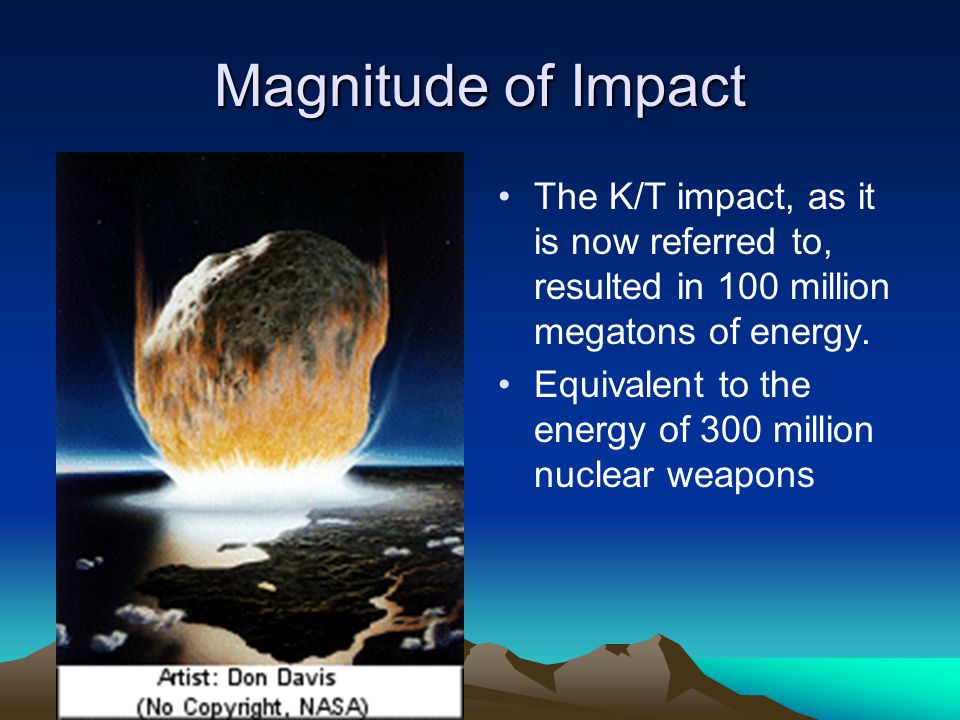What all this leaves us with, as one researcher has put it, is "tons of conjecture and very little evidence." Cooling seems to be associated with at least three of the big extinction events — the Ordovician, Devonian, and Permian — but beyond that little is agreed, including whether a particular episode happened swiftly or slowly. Scientists can't agree, for instance, whether the late Devonian extinction — the event that was followed by vertebrates moving onto the land — happened over millions of years or thousands of years or in one lively day.

One of the reasons it is so hard to produce convincing explanations for extinctions is that it is so very hard to exterminate life on a grand scale. As we have seen from the Manson impact, you can receive a ferocious blow and still stage a full, if presumably somewhat wobbly, recovery. So why, out of all the thousands of impacts Earth has endured, was the KT event so singularly devastating? Well, first it was positively enormous. It struck with the force of 100 million megatons. Such an outburst is not easily imagined, but as James Lawrence Powell has pointed out, if you exploded one Hiroshima-sized bomb for every person alive on earth today you would still be about a billion bombs short of the size of the KT impact. But even that alone may not have been enough to wipe out 70 percent of Earth's life, dinosaurs included.












